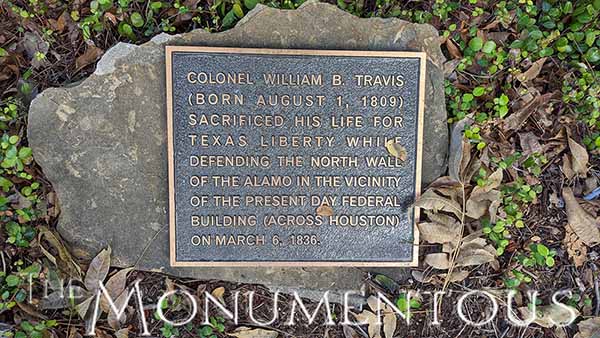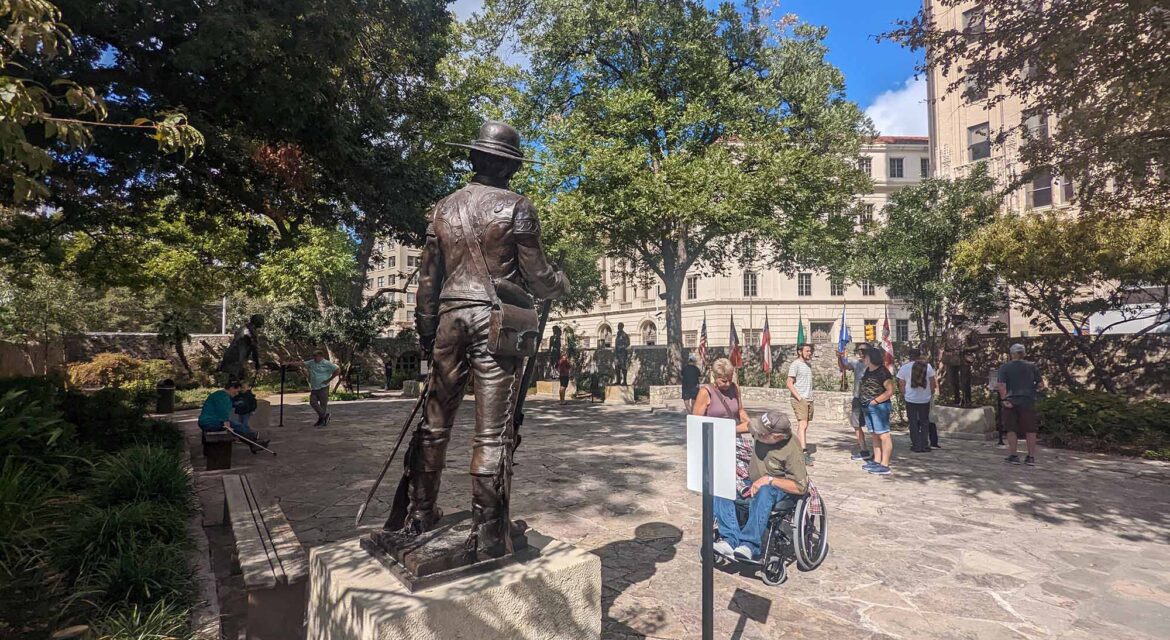 Featuring a variety of bronze statues dedicated to the heroes of the Texas Revolution, the Cavalry Courtyard embraces the legacy of the Alamo in San Antonio, Texas. Located on the grounds of the Alamo itself, it highlights what it can mean to see a legacy further imagined and embraced in a way that creates connections across audiences and eras.
Featuring a variety of bronze statues dedicated to the heroes of the Texas Revolution, the Cavalry Courtyard embraces the legacy of the Alamo in San Antonio, Texas. Located on the grounds of the Alamo itself, it highlights what it can mean to see a legacy further imagined and embraced in a way that creates connections across audiences and eras.

Home to the “Statues of Heroes”
 Shaded by Texas pecan trees, Cavalry Courtyard was established in 1974. The open space is believed to be where the defenders had kept the cattle that fed the garrison but also features a marker that calls out the location of where William Travis sacrificed his life while defining the north wall of the Alamo. His status is one of the many that define the “Statues of Heroes.”
Shaded by Texas pecan trees, Cavalry Courtyard was established in 1974. The open space is believed to be where the defenders had kept the cattle that fed the garrison but also features a marker that calls out the location of where William Travis sacrificed his life while defining the north wall of the Alamo. His status is one of the many that define the “Statues of Heroes.”
Statues of Travis as well as Hendrick Arnold, James Bowie, John William Smith, Juan Nepomuceno Seguin and Emily West are located across the courtyard. Bowie participated in and died during the Battle of the Alamo itself, while Dickinson was a survivor of the conflict. Travis was one of the Texas Declaration of Independence and Smith was an early San Antonio mayor.
Cavalry Courtyard is also a source of revenue, as a location for small receptions and military ceremonies. As part of a larger sculpture series, it has cultivated interest from audiences that further connect and showcases the legacy of the location, transforming what was just an empty space into something much more.

Expanding the Legacy of the Alamo
 Cavalry Courtyard is a prominent example of what it can mean to further imagine and develop an established legacy. By directly showcasing the people and history of the location, it represents a powerful means of additional engagement.
Cavalry Courtyard is a prominent example of what it can mean to further imagine and develop an established legacy. By directly showcasing the people and history of the location, it represents a powerful means of additional engagement.

